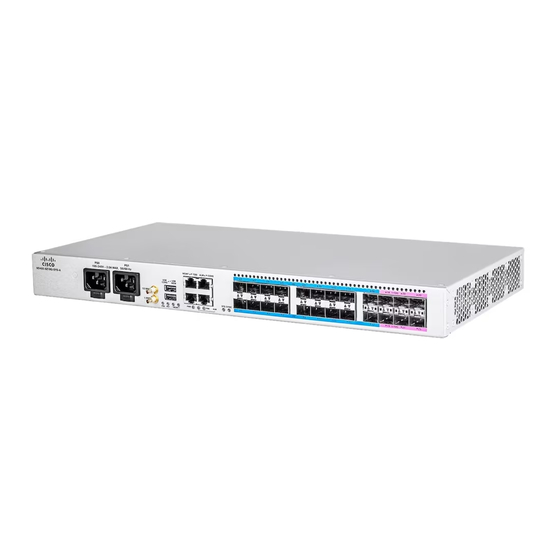Cisco N540X-8Z16G-SYS-A Manuel - Page 25
Parcourez en ligne ou téléchargez le pdf Manuel pour {nom_de_la_catégorie} Cisco N540X-8Z16G-SYS-A. Cisco N540X-8Z16G-SYS-A 30 pages.
Également pour Cisco N540X-8Z16G-SYS-A : Préparer l'installation (14 pages)

Install the Device
Figure 30: SFP/SFP+ Module Cage Cover
Caution
Caution
Note
Bale Clasp SFP or SFP+ Module
The bale clasp SFP or SFP+ module has a clasp that you use to remove or install the module. (See the figure
below.)
Protect the SFP or SFP+ modules by inserting clean dust covers into them after the cables are removed.
Be sure to clean the optic surfaces of the fiber cables before you plug them back into the optical ports
of another module. Avoid getting dust and other contaminants into the optical ports of your SFP or SFP+
modules, because the optics do not work correctly when obstructed by dust.
We strongly recommended that you do not install or remove the SFP or SFP+ module with fiber-optic
cables attached to it because of the potential of damaging the cable, the cable connector, or the optical
interfaces in the module. Disconnect all cables before removing or installing an SFP or SFP+ module.
Removing and inserting a module can shorten its useful life; so you should not remove and insert modules
more than it is absolutely necessary.
When installing an SFP or SFP+ module, you would hear a click as the triangular pin on the bottom of
the module snaps into position into the hole in the receptacle. The click indicates that the module is
correctly seated and secured in the receptacle. Verify that the modules are completely seated and secured
in their assigned receptacles on the line card by firmly pushing on each SFP or SFP+ module.
Bale Clasp SFP or SFP+ Module
Install the Device
25
